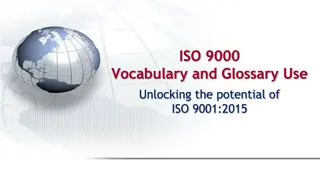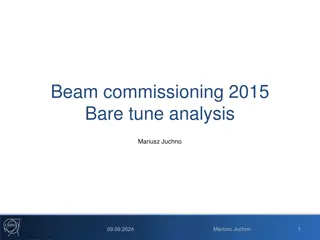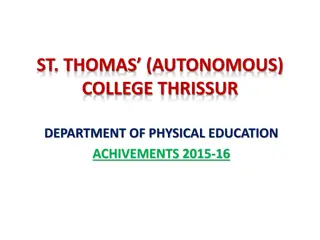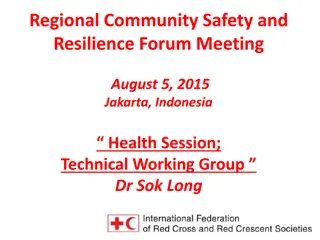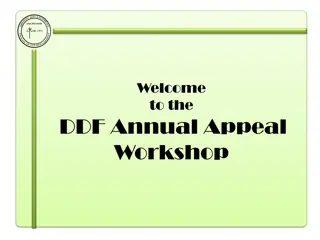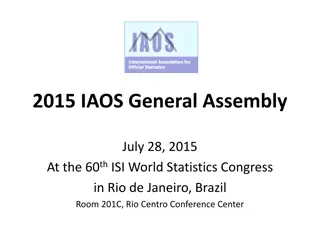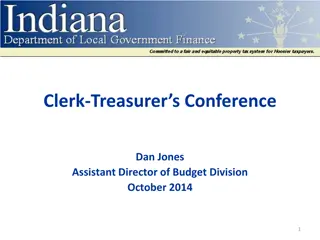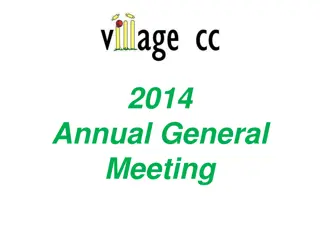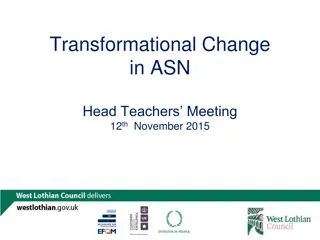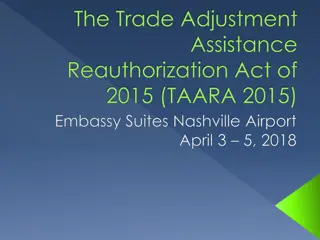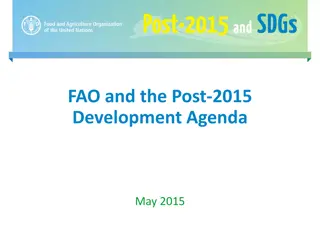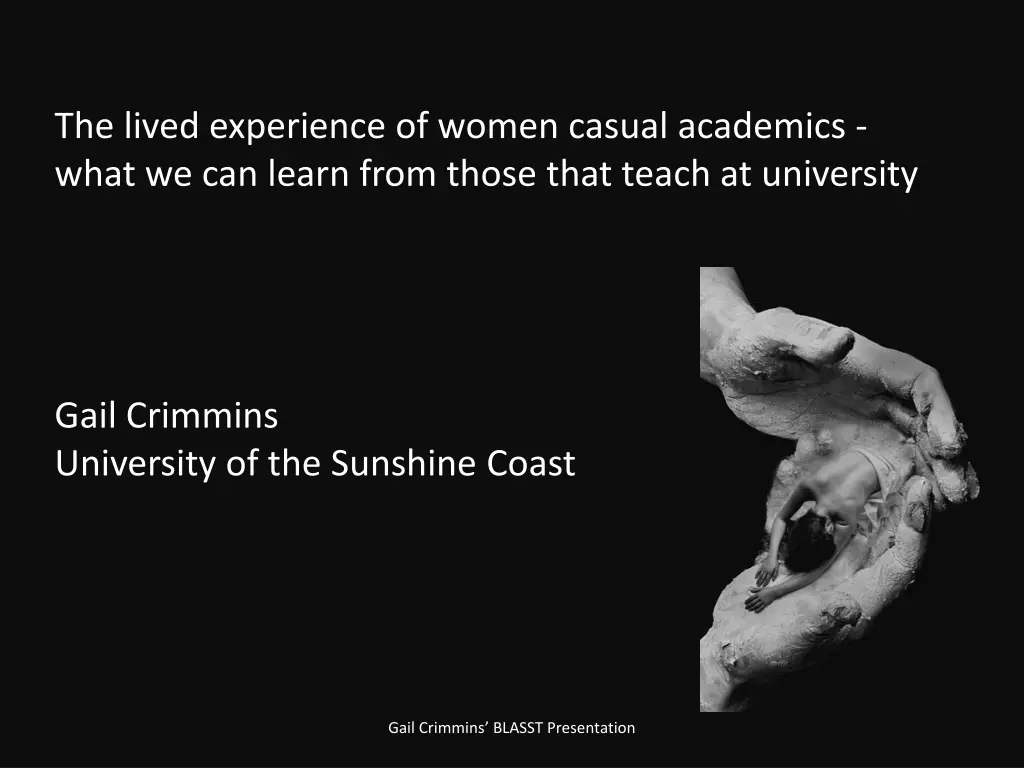
Insights into Women Casual Academics: University Realities
Explore the insights gathered from the lived experiences of women casual academics teaching at universities. Understand the challenges, recruitment processes, engagement strategies, and professional development aspects crucial for sessional staff in academia. Discover the global trend of casualized academic employment and its implications on university policies and practices.
Download Presentation

Please find below an Image/Link to download the presentation.
The content on the website is provided AS IS for your information and personal use only. It may not be sold, licensed, or shared on other websites without obtaining consent from the author. If you encounter any issues during the download, it is possible that the publisher has removed the file from their server.
You are allowed to download the files provided on this website for personal or commercial use, subject to the condition that they are used lawfully. All files are the property of their respective owners.
The content on the website is provided AS IS for your information and personal use only. It may not be sold, licensed, or shared on other websites without obtaining consent from the author.
E N D
Presentation Transcript
The lived experience of women casual academics - what we can learn from those that teach at university Gail Crimmins University of the Sunshine Coast Gail Crimmins BLASST Presentation
The lived experience of women casual academics - what we can learn from those that teach at university This presentation aims to: Briefly contextualise a research project that investigated the lived experience of women causal academics; Re-present some of the lived experiences of women casual academics; Discuss what we can learn about the recruitment, engagement and professional development of sessional staff, and those with whom they work, from the narratives of women casual academics. Gail Crimmins BLASST Presentation
Context In 2011, 67,000 of all academics employed in Australian universities were employed on a casual contract (May, Strachan, Broadbent, & Peetz, 2011). It is estimated that up to 80% of first year teaching is undertaken by sessional staff (Percy et al., 2008). In addition, casual employment figures in academia, when compared with figures from other industries, reveal that in 2011, 19% of all employed persons in Australia were employed on casual contracts, yet 61% of the Australian academic workforce were casually employed (May et al., 2011). Finally, the majority of casual academics in Australia are women (May et al., 2011; Rea, 2012). Gail Crimmins BLASST Presentation
Correspondingly, the increase in casualised employment within Australian academia is part of a worldwide phenomenon (Smith & Coombe, 2006). In 2006 Bryson and Blackwell identified that over half the academic staff employed in the UK were employed on temporary contracts, and a similar percentage of casual academic employment has been identified in Canada (Ontario Confederation of University Faculty Associations, 2015). Furthermore, in 2014 in the USA contingent appointments constitute 70% of faculty teaching positions in the non-profit higher education sector (Kezar & Maxey, 2014). Thus, there is an ongoing transformation of the profession into a majority of contingent [temporary] employees" (Schuster & Finkelstein, 2006, p5). Gail Crimmins BLASST Presentation
The full-time, permanent, centrally-located teaching/research academic is no longer the norm around which [university] policy and practice can be formed (Percy et al. 2008, p. 7). Or, the casual academic is now the norm around which university policy and practice needs to be formed. Gail Crimmins BLASST Presentation
The identified absence of women casual academics voice in academic discourses led me to consider two distinctive - but convergent phenomena. The what and the how of women casual academics narratives .. and why they are currently absent Gail Crimmins BLASST Presentation
I engaged with six women casual academics from three different universities in SE Queensland, over 12 months, to elicit their lived experience of casual academia. I then restored their narratives verbatim - in order to capture and re-present the messiness, richness, and fully-embodied nature of their lived experience. Human experience and narrative require interpretation not explanation, and interpretation requires methods that are distinct from analysis (Hendry, 2010). Consequently, the approach I adopted to handling the data in the research project was a narrative interpretation or re-storying process. Gail Crimmins BLASST Presentation
In order to acknowledge and publicly re-present the experience of women casual academics in Australian universities I created and staged six short scenes of verbatim drama based on the lived experience of women casual academics. Verbatim theatre is described as theatre of public dialogue and democracy whose main purpose is to to give listening ears to voices that often go unheard (Wake, 2010, p.3). Gail Crimmins BLASST Presentation
This is part of the first scene The scene is scene one: When and in what circumstances did you become a casual academic? (1:07 seconds in) Gail Crimmins BLASST Presentation
What can we learn from the women casual academics about when and in what circumstance they became casual academics? There isn t an obvious official or objective recruitment process in place (chance played a large part in the women gaining academic work); The women are permanently casual ; They often offer rich, industry-based knowledge and expertise; They are motivated by student learning Gail Crimmins BLASST Presentation
This is scene four The scene is called Delta Dawn what s that flower you have on? Gail Crimmins BLASST Presentation
What did we learn from women casual academics about their feelings of connectedness and integration in the academy? They feel marginalised, disconnected, unheard. Gail Crimmins BLASST Presentation
This is a section from scene five The scene is called there s nothing you can do, you can t speak up Gail Crimmins BLASST Presentation
What can we learn from these women about the lack of formal recruitment and management of casual academics? If we know that most management of casual academics is undertaken by subject or course coordinators, what are their professional development needs? What opportunities were identified for engaging the skills and expertise of casual teachers into the curriculum with which they engage? Gail Crimmins BLASST Presentation
This is a section from scene 2 The scene is called and then there s this long wait in-between semesters Gail Crimmins BLASST Presentation
So what can we learn from those that teach at university? In particular, what we can learn about the recruitment, engagement and professional development of casual academics, and those with whom they work, from the lived experience of women casual academics? Gail Crimmins BLASST Presentation
The lived experience of women casual academics - what we can learn from those that teach at university List of references: Hendry, P. M. (2010). Narrative as inquiry. The Journal of Educational Research, 103(2), 72 80. doi: 10.1080/00220670903323354 Kezar, A., & Maxey, D. (2014). Faculty matter: So why doesn t everyone think so? Thought & Action, 2014, 29-44 May, R., Strachan, G., Broadbent K., & Peetz, D. (2011). The casual approach to university teaching; Time for a re-think? In K. Krause, M. Buckridge, C. Grimmer & S. Purbrick-Illek (Eds.), Research and development in Higher Education: Reshaping higher education 34 (pp. 188-197). Gold Coast, Australia: Research and Development Society of Australasia, Inc Ontario Confederation of University Faculty Associations. (2015). Adjunct Walkout Day: Growing use of contract faculty in Ontario traps many in precarious work, threatens quality of higher education By: Canada Newswire, Canada Newswire, 02/25/2015 Percy, A., Scoufis, M., Parry, S., Goody, A., & Hicks, M. (2008). The RED Report, Recognition - Enhancement - Development: The contribution of sessional teachers to higher education. Sydney: Australian Learning and Teaching Council. Retrieved from http://ro.uow.edu.au/cgi/viewcontent.cgi?article=1139&context=asdpapers Rea, J. (2012). National Tertiary Education Union written submission to the Independent Inquiry to Insecure Work. Retrieved from http://www.nteu.org.au/library/view/id/2186 Schuster, J. H., & Finkelstein, M. J. (2006). The American faculty: The restructuring of academic work and careers. Baltimore: Johns Hopkins University Press Smith, E., & Coombe, K. (2006). Quality and qualms in the marking of university exploratory study. Higher Education, 51(1), 45-69 assignments by sessional staff: An Wake C. (2010b). Towards a working definition of verbatim theatre. In P. Brown (Ed.), Verbatim: Staging Memory and Community (pp. 2-5). Strawberry Hills, NSW: Currency Press. Gail Crimmins BLASST Presentation

